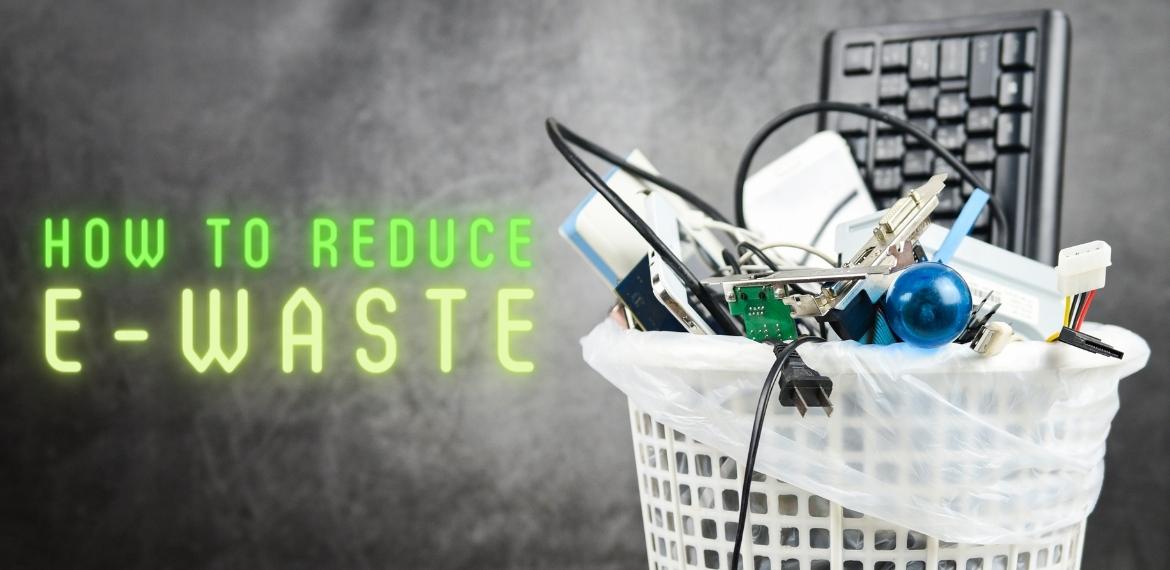
Thanks to 42Gears for providing us with this blog post.
Did you know that around 50 million tonnes of e-waste is generated every year across the globe, and only 20% is recycled through organised and regulated channels? “If e-waste continues to accumulate in the future, it may pose a serious threat to the environment, society, and economy.”
What is e-waste?
E-waste refers to any electrical or electronic equipment that is unwanted, not working, and has been discarded by its owner as waste without the intent of re-use. E-waste includes a wide array of products. As might be expected, screens, monitors, laptops, tablets, smartphones, computers, printers, telephones, and mobile phones can all be e-waste. However, e-waste can also include household or business items that have electrical components with power or battery supply. For example, temperature exchange equipment such as refrigerators, freezers, and air conditioners can become e-waste.
E-waste contains toxic components such as mercury, cadmium, lead, polybrominated flame retardants, lithium, and barium. Unfortunately, these components can be very dangerous to human health. They can adversely affect the respiratory system, lungs, kidneys, and brain.
Trends driving e-waste creation
Perhaps the biggest reason for increased e-waste is new users joining the Internet for the first time. Internet access is expanding worldwide to more people than ever before, driving demand for devices that will eventually become e-waste. According to Internet Growth Statistics, 69% of the world’s population used internet in 2022, and going by the trend, two-thirds of the world’s population will be online by the end of 2023.
Another major culprit is planned obsolescence – the practice of intentionally having devices become outdated so users will need to purchase new ones. Global increases in disposable income mean that many consumers are eager to replace older devices with new ones. Plus, many business apps and services are designed to work best on powerful, recently-made devices. In order to stay up-to-date, companies and workers must purchase new devices and discard old ones. Because of these trends, consumers and businesses are constantly getting rid of older, slower devices, creating e-waste.
What companies are doing to reduce e-waste
It is important that businesses recognize the role they play in generating e-waste. Several major companies have begun taking steps to reduce e-waste, and many others will likely follow suit.
For example, beginning with the 2020’s iPhone 12 line, Apple chose not to include headphones and chargers with its phones. This can help to reduce unnecessary EEE (electrical and electronic equipment), according to Teresa Domenech of University College London’s Institute for Sustainable Resources. Domenech also notes this initiative will also reduce environmental damage because Apple will need to extract fewer primary raw materials, perform less manufacturing, and ship fewer products overall.
Owing to the fact that discarded charges are contributing to 11,000 metric tons of e-waste in Europe annually, European Union Lawmakers have made it mandatory for mobile manufacturers to provide universal chargers.
Another way of reducing e-waste is recycling old electronics. LG’s India subdivision operates a network of 40 recyclers in India. In order to maximize the number of people participating in the program, LG picks up e-waste directly from the user’s home. Between 2017 and 2020, LG collected and recycled almost 100,000 metric tons of e-waste in India.
Of course, many technology enterprises do not manufacture their own devices, so they cannot use these techniques to reduce e-waste. Still, there are other ways to reduce e-waste; for example, investing in device farms. Let’s explore how this works.
How device farms help reduce e-waste
While the impact of e-waste is alarming across the globe, companies are researching new ways to reduce e-waste and prevent health and safety hazards. As a result, many companies have begun implementing new methods and processes that combat the rise of e-waste.
Using a device farm is one of the most innovative ways through which companies can reduce e-waste. Often, companies require large device inventories consisting of multiple devices and multiple versions of the same device for their DevOps and QA teams. Unfortunately, these devices may not be accessible to all the team members; if someone needs to test an app on a device in the office, but that person works remotely, connecting to the device will be a challenge.
However, if these devices are enrolled into a device farm, anyone on DevOps and QA teams can easily access them remotely, no matter where they are located.
This is the key to reducing e-waste with a device farm. By purchasing a single device and connecting it to a device farm, a company can make that device accessible to anyone in the company worldwide. This substantially improves ROI on a given device and removes the need to purchase multiple devices for multiple offices.
Device farms can be of two types – public device farms, or private device farms. Public device farms are third-party platforms that allow businesses to access devices owned by a third party. Companies rent these devices for a particular time slot and pay accordingly.
On the other hand, a private device farm is owned and managed by the company itself. This setup empowers all approved company employees to access enrolled devices at any time from anywhere.
There are a few companies that help organizations to set up a private device farm. 42Gears is one of them. AstroFarm by 42Gears is a great tool that helps organizations to set up their private device farms. AstroFarm offers many benefits, allowing companies to get more value from the devices they already own, making devices available worldwide in real time, and providing global teams with an easier way to coordinate app development. For more information, please refer here.
Summary
E-waste has become a global challenge and needs to be addressed as soon as possible. While the abstract statistics are alarming, the real concerns are the growing environmental and health hazards associated with e-waste.
While consumers should work to reduce the e-waste they generate, enterprises are the biggest contributors to the problem of e-waste. As such, companies need to do their part to reduce e-waste by using better technology, processes, and products. Implementing AstroFarm by 42Gears can help you reduce e-waste by setting up your own device farm and getting the maximum ROI out of each device you purchase.
Author

42Gears
42Gears is a leader in enterprise mobility management, offering cutting-edge solutions designed to transform the digital workplace. Delivered from the cloud and on-premise, 42Gears products support all major mobile and desktop operating systems, enabling IT and DevOps teams to improve frontline workforce productivity as well as the efficiency of software development teams.
42Gears products are used by over 18000 customers across various industries in more than 115 countries and are available for purchase through a global partner network. For more information, please visit https://www.42gears.com
42Gears is an EXPO Gold partner at EuroSTAR 2023, join us in Antwerp